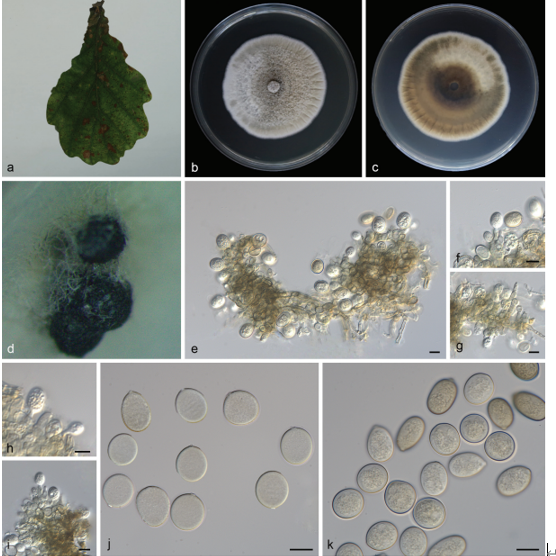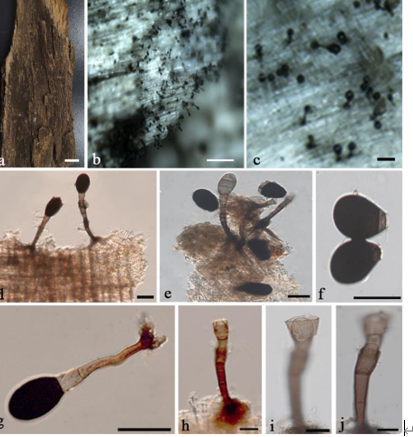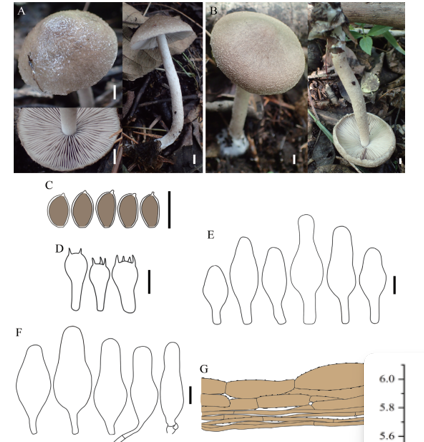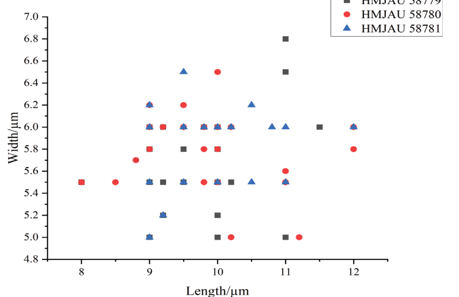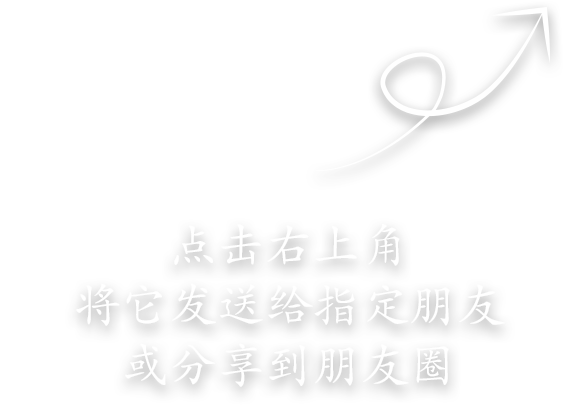Nemania fusoidispora Q.R. Li, J.C. Kang & K.D. Hyde, sp. nov. 2020
Index Fungorum number: IF551309; Facesoffungi number: FoF: 00876
Holotype: CHINA, Guiyang Province, Guiyang City, on dead bark of unknown plant, March, 2015, Q.R. Li (GZUH 0098, holotype).
Morphological description
Saprobic on dead bark. Sexual morph: Stromata pulvinate, wide spreading, following contours of wood, surface around ostioles mouse grey to dark mouse grey, 1.5 mm high, with inconspicuous ascomatal mounds, internally white between ascomata, carbonaceous, tissue, soft-textured, up to 0.2 mm wide. Ostioles coarsely papillate in discoid areas.Ascomata0.5–0.6 mmdiam.,sphaericaltoellipsoid.Peridium 35–55 μm wide, black. Paraphyses 3–5 μm, hyaline, unbranched, septate. Asci 150–240×5.5–9.5 μm (x = 236× 7.5 μm, n=30), 8-spored, unitunicate, cylindrical, long-pedicellate, the spore-bearing part 80 μm, apically rounded with J+, inverted, hat-shaped, apical apparatus, 2 μm high, 1.5 μm broad. Ascospores 13–16×3–4 μm (x = 14.1×3.3 μm, n=30), uniseriate to irregularly-biseriate, light brown, fusoid to inequilaterally ellipsoid, with acute ends, lacking a germ slit. Asexual morph: Undetermined.
Habitat: on dead bark of unknown plant
Distribution: China
GenBank Accession:
Notes: Nemania fusoidispora is similar to N. illita (Schwein.) Pouzar in which ascospores are fusoid and lack a germ slit (Rogers et al. 2008; Ju and Rogers 2002) and differs from other species of Nemania. Nemania fusoidispora differs in having larger ascospores (13–16× 3–4 μm) than N. illita (11–12×3–4 μm). Nemania fusoidispora groups with other Nemania species and forms a monophyletic clade with 87 % bootstrap support. The genus Nemania appears as a sister clade to both
Brunneiperidium and Kretzschmaria.
Reference: Hiran A. Ariyawansa1,3 & Kevin D. Hyde1,2,3,15 & Subashini C. Jayasiri1,3 et al.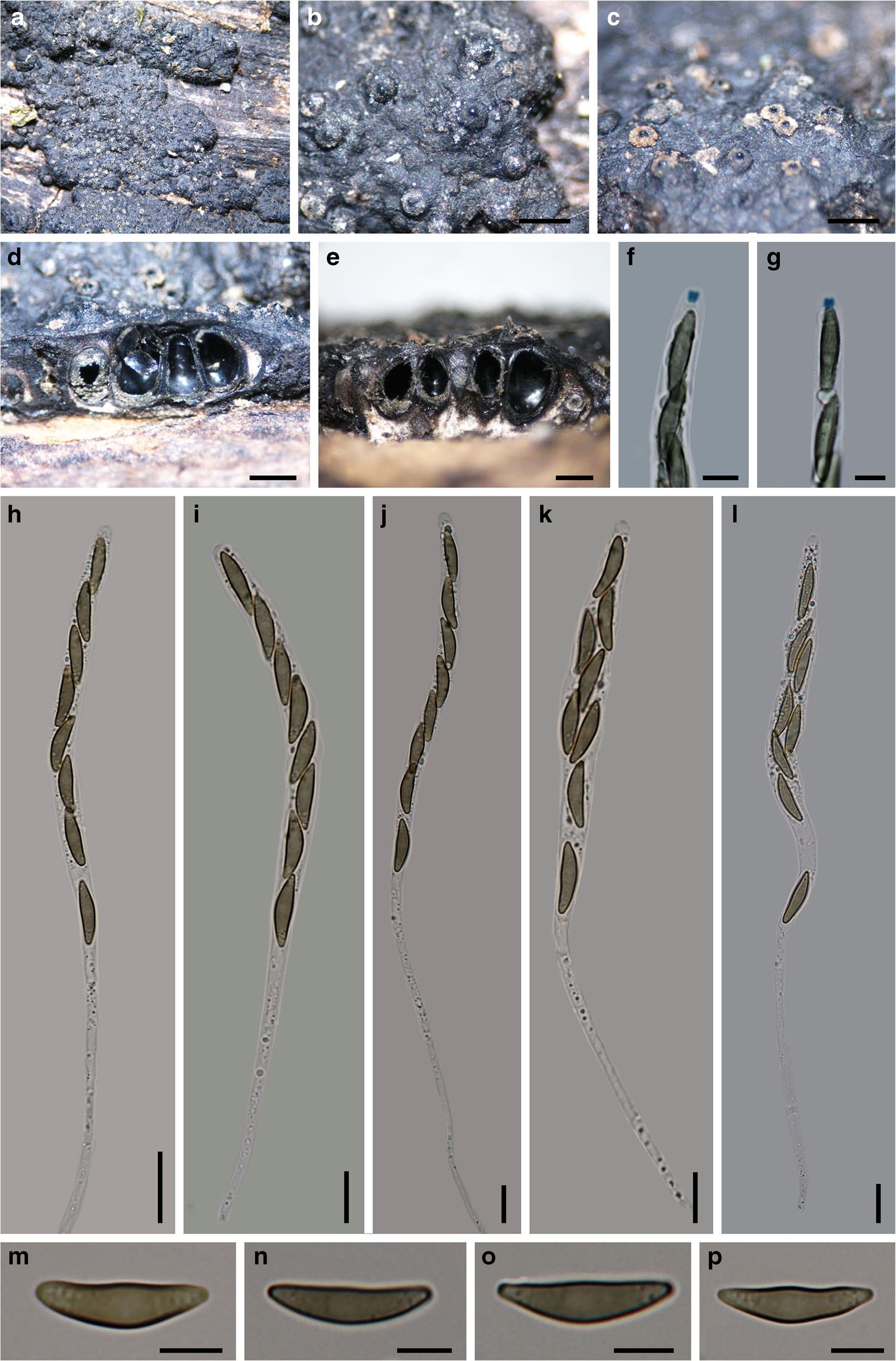
Nemania fusoidispora (holotype) a–c Stromata on the surface of the host d, e Section of stroma f, g Ascus apex with a blue apical ring in Melzer’s reagent h–l Asci with ascospores m–p Ascospores. Scale bars: b–e=200 μm, f, g=5 μm, h–l=10 μm, m–p=5 μm


